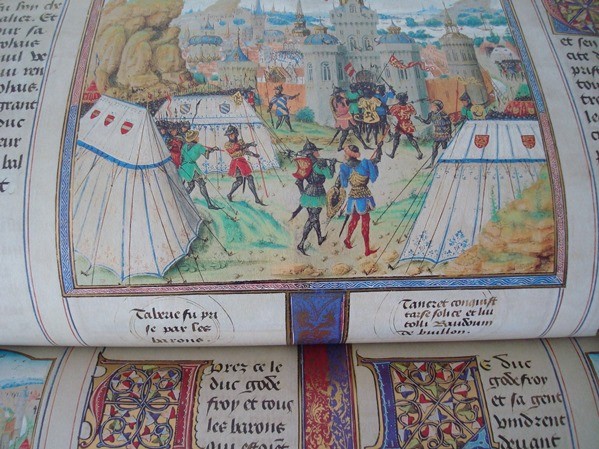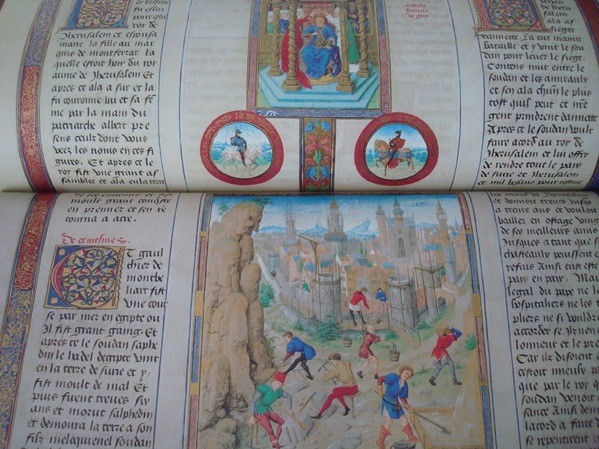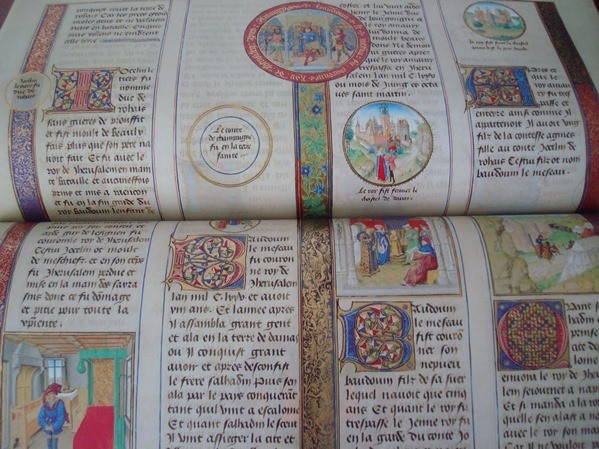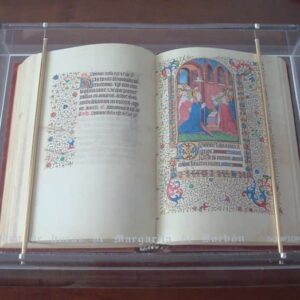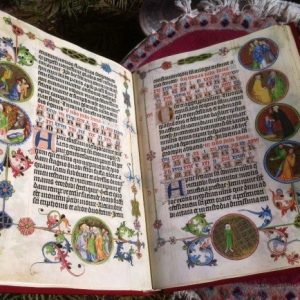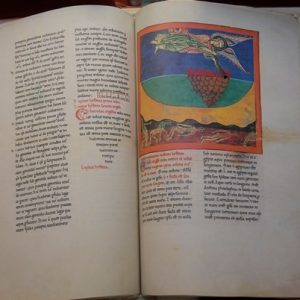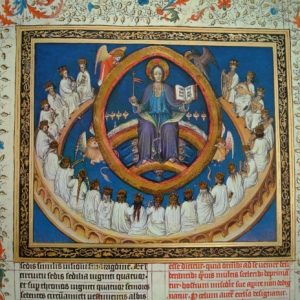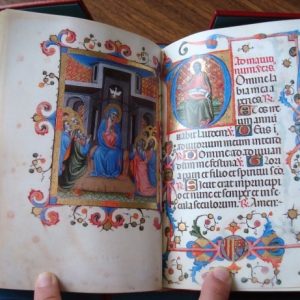Description
Exemplary of the facsimile edition of luxury that the publishing house realized in 2005, exhausted years ago. Complete and in perfect condition.
The Chronicles of Jherusalem Abrégées (The Chronicles of the Abbreviated Crusades, or summary) relate, as a synopsis, the events of the “crusaders” and the foundation and saga of the Latin Kingdom of Jerusalem. The manuscript, in its primitive conception was a roll: “tournant en manière de rôle”, and then cut to bind it. Hence its long, landscape shape.
Technical characteristics:
Facsimile of the original manuscript Ms. 2533 of the National Library of Austria, dated in the year 1455 (XV century).
Facsimile edition made in 2005 limited to 575 copies and numbered with notarial certificate.
Hand bound in parchment on thick board. Landscape format 55.5 x 29.5 cm. 36 pages, all of them of great artistic beauty. It contains 87 miniatures, some of them spectacular full-page and with gold, lots of circles with names written in ink of different colors.
Author: David Aubert.
Codex landscape and atypical by the opening of it: horizontal, from bottom to top, not from right to left.
The facsimile is presented in an open case for its best preservation, format 56.5 x 30 x 3.5 cm.
Accompanied by a bound hard cover book with golden titles, format 21.8 x 30.7 cm. It includes a transcription and translation into Spanish of the original text in medieval French, as well as a paleographic study by Carlos Sáez, Professor at the University of Alcalá.
The Chronicles of the Crusades Abbreviated, or summarized, relate the events of the knights who, during the First Crusade, at the end of the 11th century, conquered Jerusalem and many other lands taken from the Turks. Among other historical events, it narrates the conquest of the Holy City and the history of the kingdom of Jerusalem until its fall, as well as a brief biography of its rulers, knights and other important figures of the court. This extract of some facts so relevant to history suggests that its author knew perfectly all its history, and that the manuscript was used as a brief note or genealogical reminder. There is also a political or propaganda intention, given the owner’s interest in a new crusade, as the father of Felipe III el Bueno, Juan sin Miedo (1371-1419), was taken prisoner by the Turkish Bayezid I at the Battle of Nicópolis (1396).
The manuscript, made in the workshop of David Aubert around 1455 by order of the Duke of Burgundy, is written in tiny burgundy bastard letters, and decorated with gold initials, borders and miniatures that describe battles and places of cities. Its strange long and oblong format explains its own reason for being, because apart from a chronicle, it is a genealogy. The genealogies were written on a scroll that could be rolled up and, in fact, in an inventory of the court of Burgundy made when Felipe el Bueno died (1467), the seat related to this manuscript says: “tournant en manière de rôle”. When it was decided to cut for its binding in the form of a codex, logically the text written in columns does not follow in the next column. All this is perfectly unraveled in the study annexed to the facsimile, since it has been transcribed, translated and commented.
On March 8, 1086, Godfrey and the barons of France set course for Syria. A miniature collects the moment when the ships are being procured.
The text is not very clear, but Jerusalem was taken on July 15, 1099, and Godfrey was crowned on the 22nd.
On the death of Godfrey in 1100 he was succeeded by his brother Baldwin I. Before Jerusalem had been taken Nicea (for Emperor Alexius of Constantinople), Edessa, Antioch, and other cities; but from Baldwin I the Latin kingdom of Jerusalem spread throughout Syria.
In 1187 Saladin took Jerusalem, and the heirs to the Jerusalemite throne were succeeded in exile. In 1191 the city of Acre was taken by Ricardo Corazón de León. The manuscript ends here its story, having fulfilled its objective: to justify a new crusade in 1455, showing a historical semblance of the kings and relating in the medallions the names of French Knights who intervened. Certainly, some inscribed related to Philip III the Good were never in the Crusades. Here the Chronicles of Jerusalem abbreviated.
Shipping costs on account of the buyer, according to order and destination. Consult us without obligation (indicating the reference of the article) any doubt.




